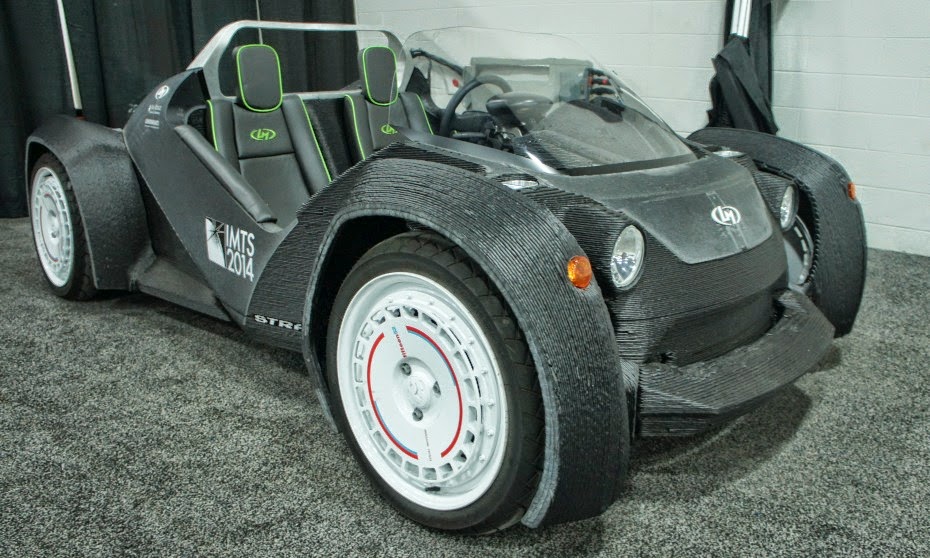Researchers at the University of Washington have devised a way by which technology can be made from 3D printers, which can be got from the off- the shelf and what’s more is that these 3D printed objects wouldn’t have to use electronics or be made from electronic materials to work. These 3D printed objects can be in the form of a pill bottle which is “smart” in the sense that it helps a patient remember when to take their pills.
However with 3D printed objects made of plastic, they cannot be monitored by researchers to show how the pill bottle and such is being used by the patient- that is whether they find it convenient enough for a next time use or once is enough. But researchers have found a way to overcome this obstacle as well.
Researchers at the University of Washington have found a technique known as “backscatter” that helps these devices store data offline and then send that information when the device is back online using an antenna. The 3D printed object can also receive information in the same manner- by reflecting the signal off of an antenna.
This backscatter technique helps sort the problem of not knowing how the patient uses the 3D printed object. It also helps keep the cost low by using only plastic and non- electronic parts.
Researchers at Washington University have found a way for the 3D printed object to connect to the Wi- Fi. This will allow the 3D printed object to order a pill bottle online when the current stock is running low, say for example, when the patient requires some more.
By making 3D printed tech from plastics and without using any electronics, it keeps the cost low while also you could get the object wet without worrying about spoiling it. This opens up a whole new set of applications where the same technique can be used.
In the researchers previous study they could track data going in one direction and wanted to do so in two directions as well. That means that while a 3D printed object could track detergent levels which saved information in one direction, researchers also wanted data to be tracked in both directions like the opening and closing of a pill bottle.
With one directional data movement, researchers used gears that allowed a fluid to move through when the gear moved in one direction and this liquid would push a switch down to reach the antenna.
For two directional data movement, researchers have now developed two gears one on the top and the other on the bottom. This apparatus works in the same way as well with the fluid and gears. So as the pill bottle is opened the gear moves in one way, pressing the top antenna and when it is closed the gears move in the other way, pressing the bottom antenna.
However with 3D printed objects made of plastic, they cannot be monitored by researchers to show how the pill bottle and such is being used by the patient- that is whether they find it convenient enough for a next time use or once is enough. But researchers have found a way to overcome this obstacle as well.
The Solution to 3D Printed Objects is “Backscatter”:
Researchers at the University of Washington have found a technique known as “backscatter” that helps these devices store data offline and then send that information when the device is back online using an antenna. The 3D printed object can also receive information in the same manner- by reflecting the signal off of an antenna.
This backscatter technique helps sort the problem of not knowing how the patient uses the 3D printed object. It also helps keep the cost low by using only plastic and non- electronic parts.
Connecting the 3D Printed Object to Wi- Fi:
Researchers at Washington University have found a way for the 3D printed object to connect to the Wi- Fi. This will allow the 3D printed object to order a pill bottle online when the current stock is running low, say for example, when the patient requires some more.
By making 3D printed tech from plastics and without using any electronics, it keeps the cost low while also you could get the object wet without worrying about spoiling it. This opens up a whole new set of applications where the same technique can be used.
The Monitoring Problem in 3D Printed Objects:
In the researchers previous study they could track data going in one direction and wanted to do so in two directions as well. That means that while a 3D printed object could track detergent levels which saved information in one direction, researchers also wanted data to be tracked in both directions like the opening and closing of a pill bottle.
With one directional data movement, researchers used gears that allowed a fluid to move through when the gear moved in one direction and this liquid would push a switch down to reach the antenna.
For two directional data movement, researchers have now developed two gears one on the top and the other on the bottom. This apparatus works in the same way as well with the fluid and gears. So as the pill bottle is opened the gear moves in one way, pressing the top antenna and when it is closed the gears move in the other way, pressing the bottom antenna.






















